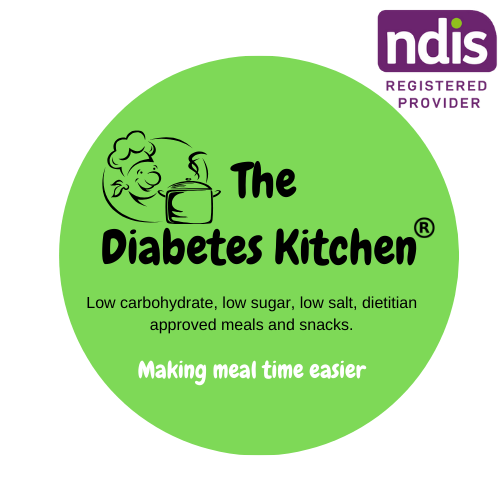How to Get Help from the NDIS in Australia: A Comprehensive Guide
The National Disability Insurance Scheme (NDIS) is an Australian government initiative designed to provide support to individuals with disabilities, their families, and carers. Launched in 2013, the NDIS focuses on giving people with disabilities more choice and control over the supports and services they receive, helping them to live independently and achieve their goals. If you're eligible, the NDIS can offer life-changing assistance. Here’s how to access help from the NDIS and what you need to know about the process.
1. Who Is Eligible for NDIS?
To access the NDIS, you need to meet certain criteria:
- Age: You must be under 65 years of age when you apply.
- Residency: You need to be an Australian citizen, permanent resident, or hold a Protected Special Category Visa.
- Disability or Impairment: You must have a permanent or significant disability that impacts your ability to perform everyday activities. This could be a physical, intellectual, sensory, cognitive, or psychosocial disability.
- Early Intervention: Even if you don’t have a permanent disability, you might still be eligible if early intervention could improve your ability to function, or delay further deterioration.
2. How to Apply for the NDIS
Once you determine your eligibility, the next step is applying for NDIS funding. Here’s a step-by-step guide to help you through the process:
- Step 1: Gather Required Information: Before applying, gather essential documents like medical reports, evidence of disability, and any relevant assessments. This documentation will be needed to support your application.
- Step 2: Make an Access Request: You can apply for the NDIS by making an "Access Request" either online or via the NDIS hotline. You may also be referred by a healthcare professional or a Local Area Coordinator (LAC) who works with the NDIS.
- Step 3: Submit Supporting Evidence: As part of the Access Request process, you’ll need to submit detailed evidence of your disability and how it impacts your daily life. This evidence can come from doctors, specialists, or allied health professionals.
- Step 4: NDIS Decision: After submitting your Access Request, the NDIS will assess your application. If you're approved, you'll be contacted to begin planning your supports and services. If your application is denied, you can request a review of the decision.
3. Planning Your NDIS Supports
Once you're approved, the next step is creating an NDIS plan. This plan outlines the goals you want to achieve and the supports needed to help you reach them.
- Step 1: Meet with a Planner or Local Area Coordinator (LAC): During this meeting, you'll discuss your daily needs, goals, and aspirations. This could involve assistance with personal care, accessing the community, or gaining employment.
-
Step 2: Identify the Types of Support You Need: Your NDIS plan will include various types of funding:
- Core Supports: Funding for daily living activities like personal care, transport, and household tasks.
- Capacity Building Supports: Assistance to help you develop skills and increase your independence, such as therapy or employment support.
- Capital Supports: Funding for assistive technology or home modifications to improve accessibility.
- Step 3: Review and Finalize Your Plan: Once the plan is drafted, you’ll review it with your planner or LAC. If you're happy with it, your plan will be submitted for approval, and you'll start receiving the approved funding.
4. How to Use Your NDIS Plan
Once your NDIS plan is approved, you can start using the funds to purchase services and supports. You can manage your plan in three main ways:
- Self-Managed: You manage the funds, paying providers directly and tracking your spending.
- Plan-Managed: You can have a plan manager take care of the financial aspects, including paying providers and managing invoices.
- NDIA-Managed: The NDIS directly handles payments to registered service providers.
You have the flexibility to choose the supports and providers that best suit your needs. It's important to regularly review your plan and discuss any changes or additional supports with your LAC.
5. Reviewing and Updating Your Plan
Your NDIS plan is not set in stone; it’s reviewed annually to ensure it continues to meet your needs as they change. If your circumstances change significantly before your scheduled review, you can request an unscheduled review at any time.
6. What Services Can the NDIS Fund?
The NDIS can fund a wide range of services and supports based on your individual needs and goals. Some examples include:
- Therapy Services: Physiotherapy, occupational therapy, or speech therapy to help you develop new skills or improve mobility.
- Personal Care: Assistance with activities like dressing, bathing, and grooming.
- Transport Services: Funding for transport to help you participate in social, community, or employment activities.
- Home Modifications: Support for making changes to your home to improve accessibility, such as installing ramps or widening doorways.
- Assistive Technology: Devices or equipment that enhance your ability to live independently, such as wheelchairs or communication aids.
7. Where to Get Help with Your NDIS Application
Applying for the NDIS can be overwhelming, but there are several resources available to help you through the process:
- Local Area Coordinators (LACs): These individuals work with the NDIS to help people understand the system and complete their applications.
- NDIS Partners in the Community: Organizations that have partnered with the NDIS to provide support services to applicants.
- NDIS Hotline: You can contact the NDIS directly for advice on the application process at 1800 800 110.
Conclusion
The NDIS is a vital resource for individuals with disabilities in Australia, offering essential support to improve quality of life and increase independence. If you're eligible, taking the steps to apply and create a tailored plan can lead to significant improvements in your daily living and long-term goals. With the right supports in place, the NDIS can help you achieve your aspirations, whether that means gaining employment, improving health, or living more independently.
For more information, visit the official NDIS website.





